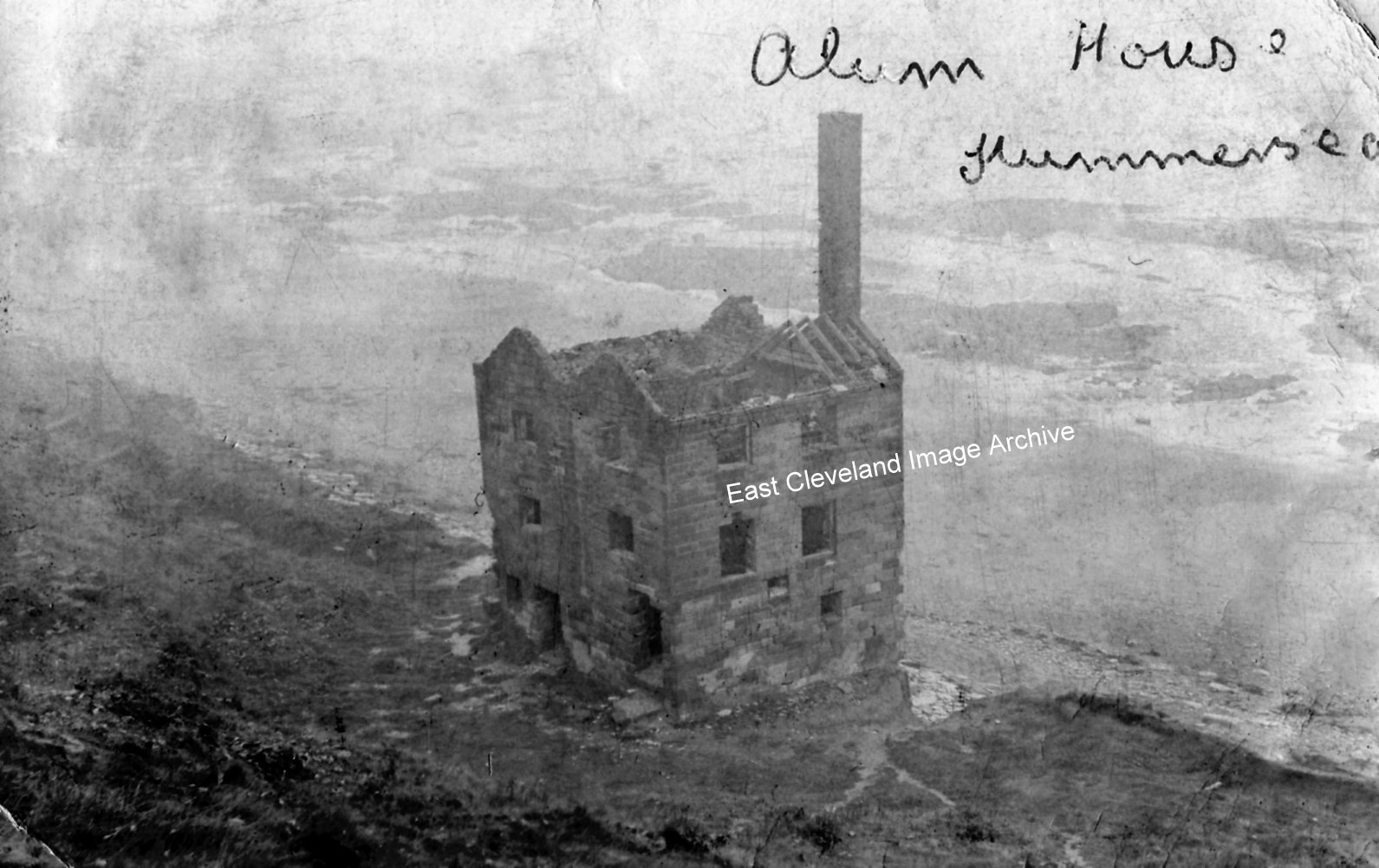
A view from the cliff looking down on the alum house at Hummersea, taken from a postcard posted in 1907.
Image courtesy of Tina Dowey.
|
|
||
 A view from the cliff looking down on the alum house at Hummersea, taken from a postcard posted in 1907. Image courtesy of Tina Dowey. 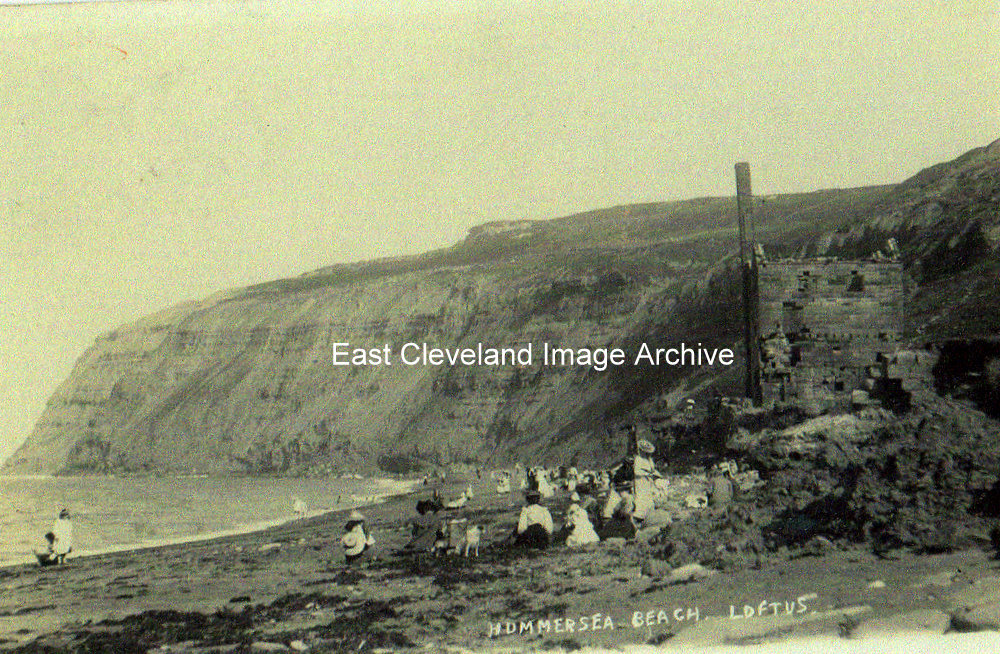 Hummersea beach, image taken from a postcard view; believed to be the work of T. C. Booth (Methodist minister of Loftus). A long walk by Hummersea farm to get to this beach, but well worth it, as we can see frequented by local people. The ruins (now long gone) were the remains of the old alum house associated with Hummersea Alum Mine. Image courtesy of Jean Hall. 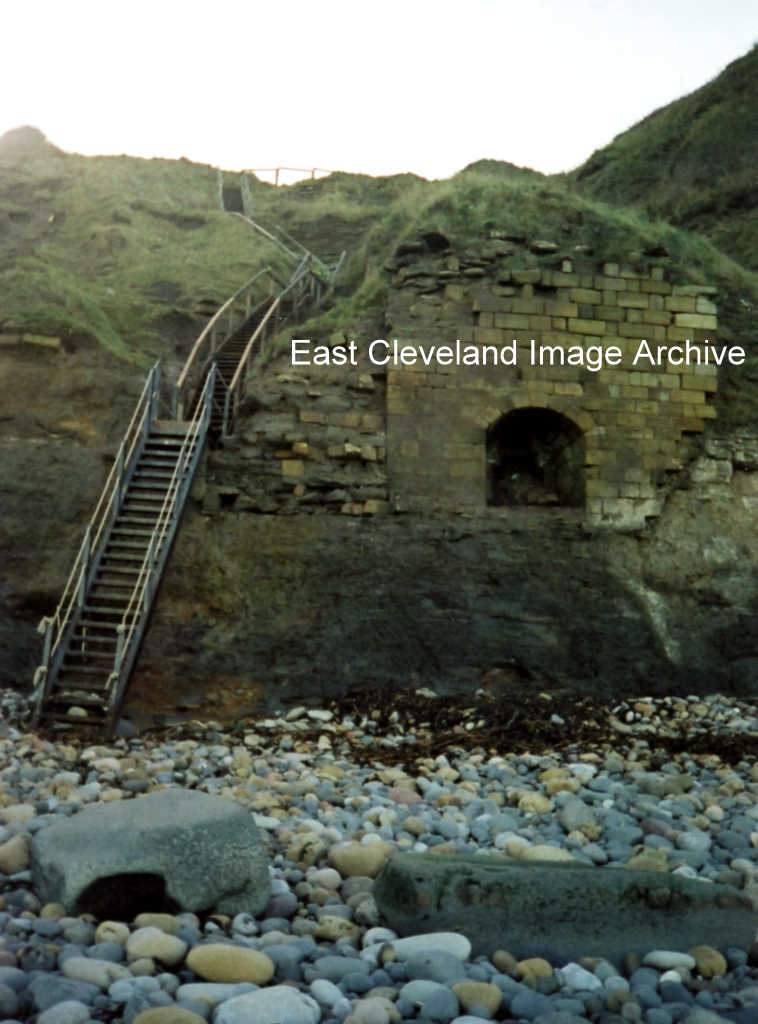 This photograph shows the new steps in place; down the cliff from Hummersea Farm to the beach, in November 2006. The old kiln looks the same as in the earlier photograph. Are the steps still there, or have they been damaged by the sea? Image courtesy of John Roberts. 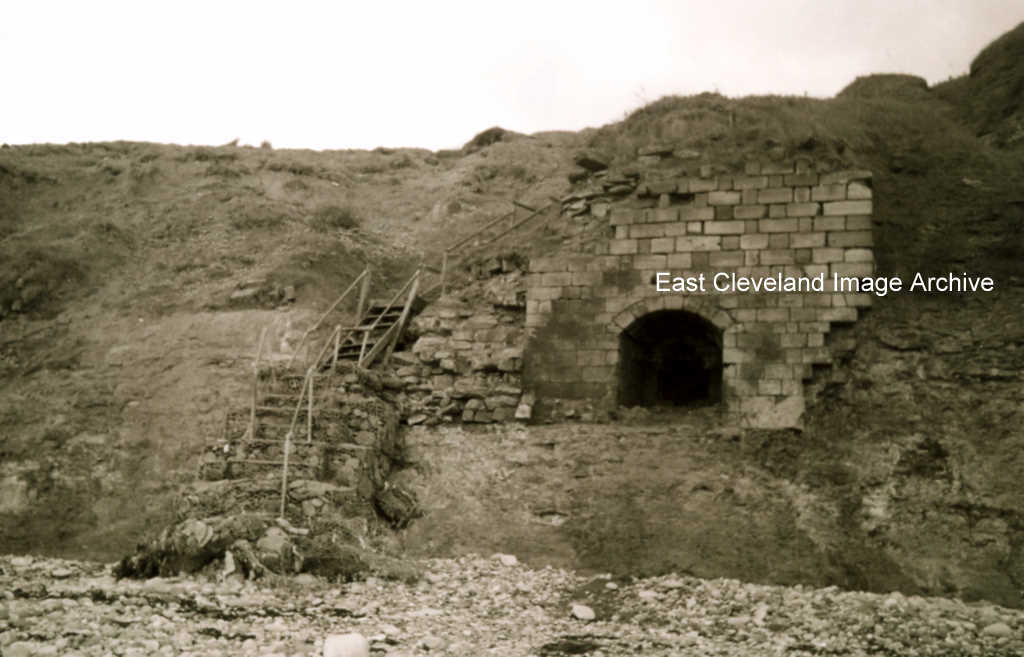 This photograph shows the bottom of the steps down from Hummersea Farm to the beach. The stone-built structure is thought to have been used as a kiln for the burning of cement stone – which was obtained from the uppermost levels of the alum shale. Image courtesy of John Roberts; information regarding the kiln from ’Steeped in History’ edited by I. Miller. 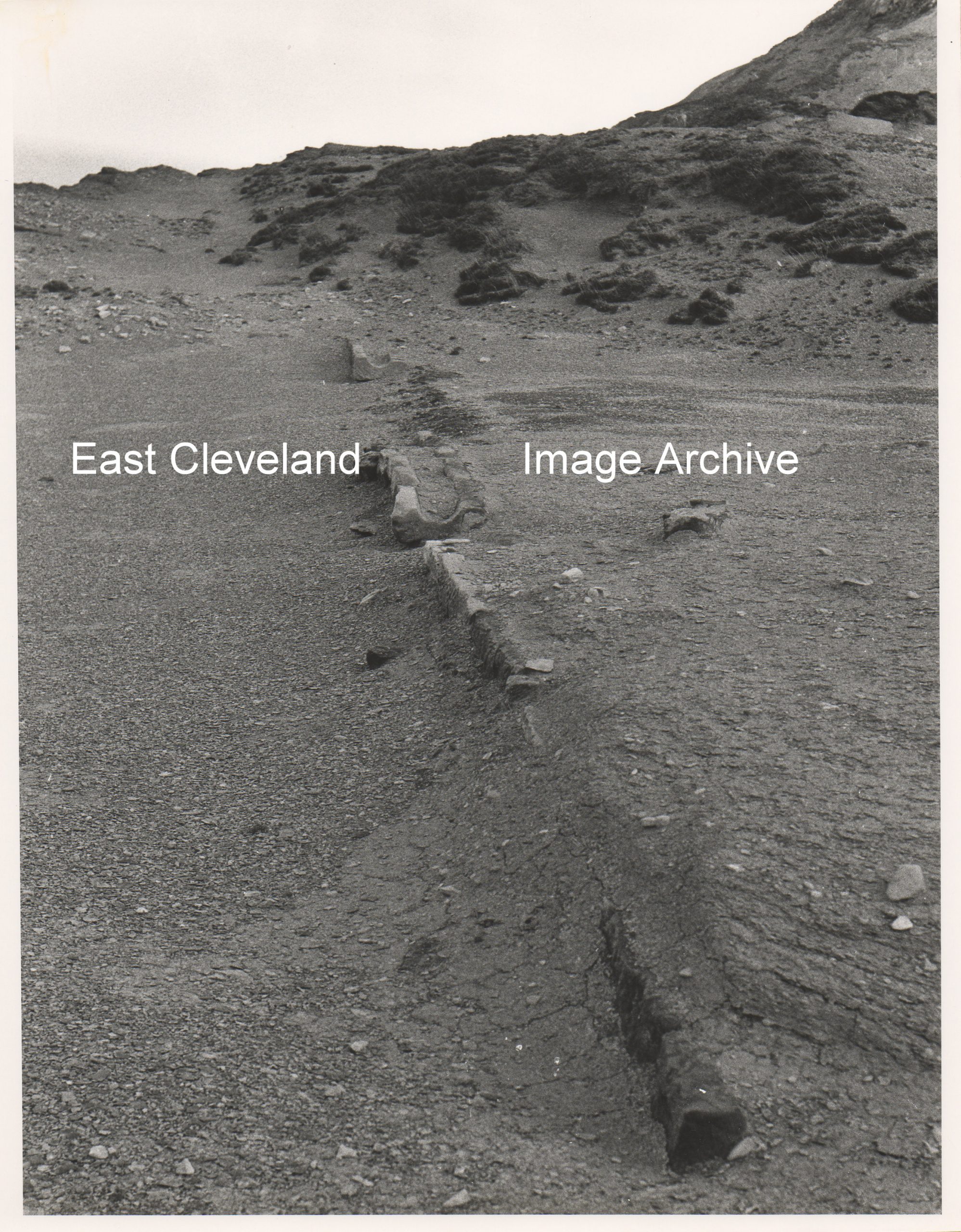 A view of the former Hummersea alum workings, almost disappearing under the eroded surface. The stone outlines are the remains of liquor channels used to move the resultant liquids to the settling tanks. Image and information courtesy of Eric Johnson.
Initially just a photograph of Boulby Cliffs, but the worked stone appears man-made. Eric Johnson who took the image and explained it is part of the Alum workings which feature on an earlier post. Jill Etheridge tells us: “Most interesting to me, especially as I live outside the area. My Great, Great, Great Grandfather was the Alum Agent to Lord Dundas in the early 1800s and died in Loftus in 1816.” Peter Appleton assists with: “Jill’s great-great-great-grandfather would have been William Usher, who was Sir Thomas Dundas’ agent from December 1803 until at least 1808 and possibly later. His will was proven in the Prerogative Court at York for the sum of £800. William had been preceded by James Bathgate, who had been the Estate’s book-keeper but was temporarily promoted to agent during a brief “inter-regnum” between the death of John C Waller (buried 3rd October 1803)and the arrival in post of William Usher c.3rd December 1803.” Image and information courtesy of Eric Johnson; thanks to Jill Etheridge and Peter Appleton for the interesting comments. |
||
Recent Comments